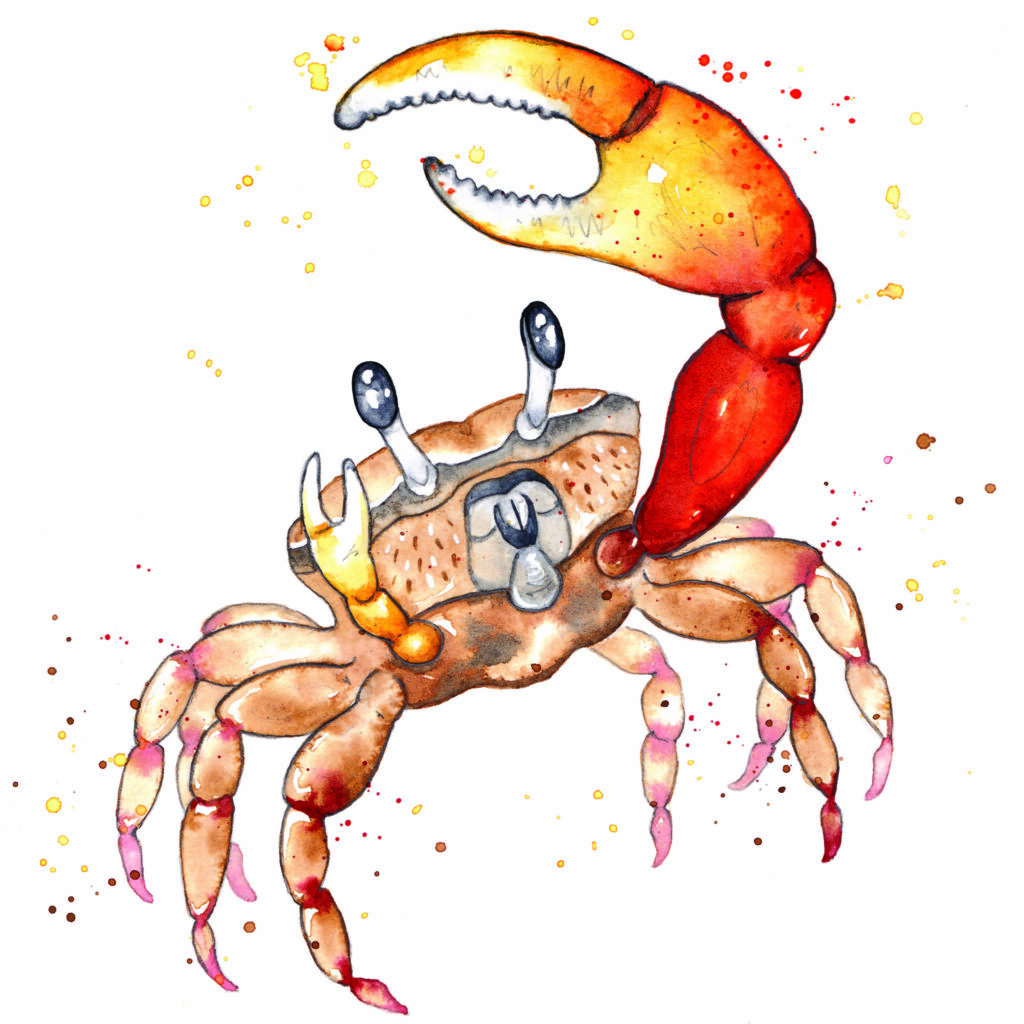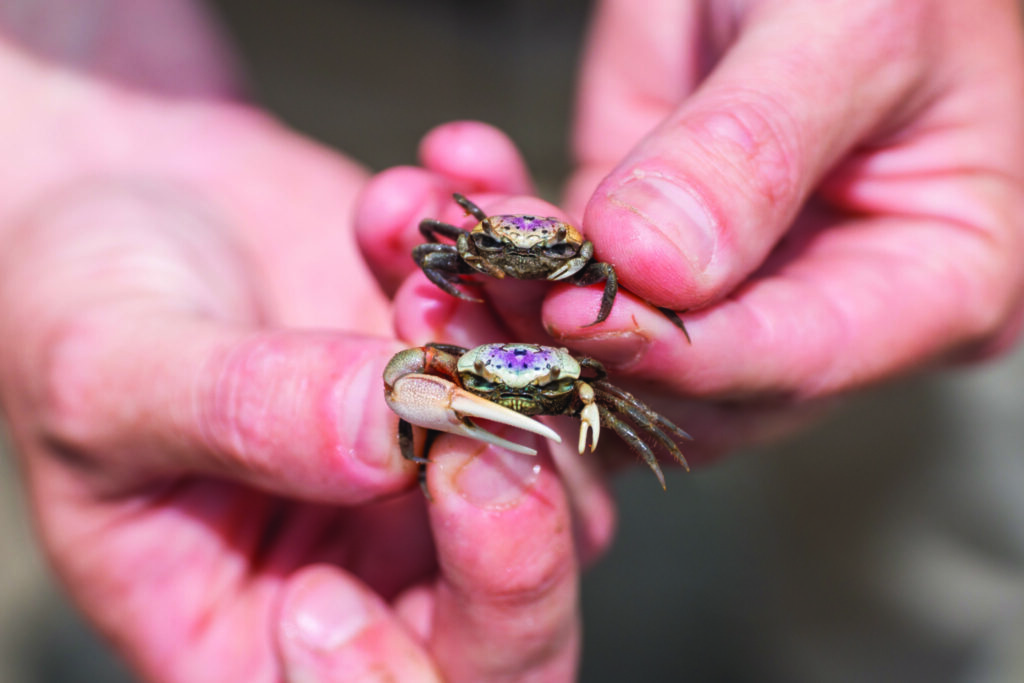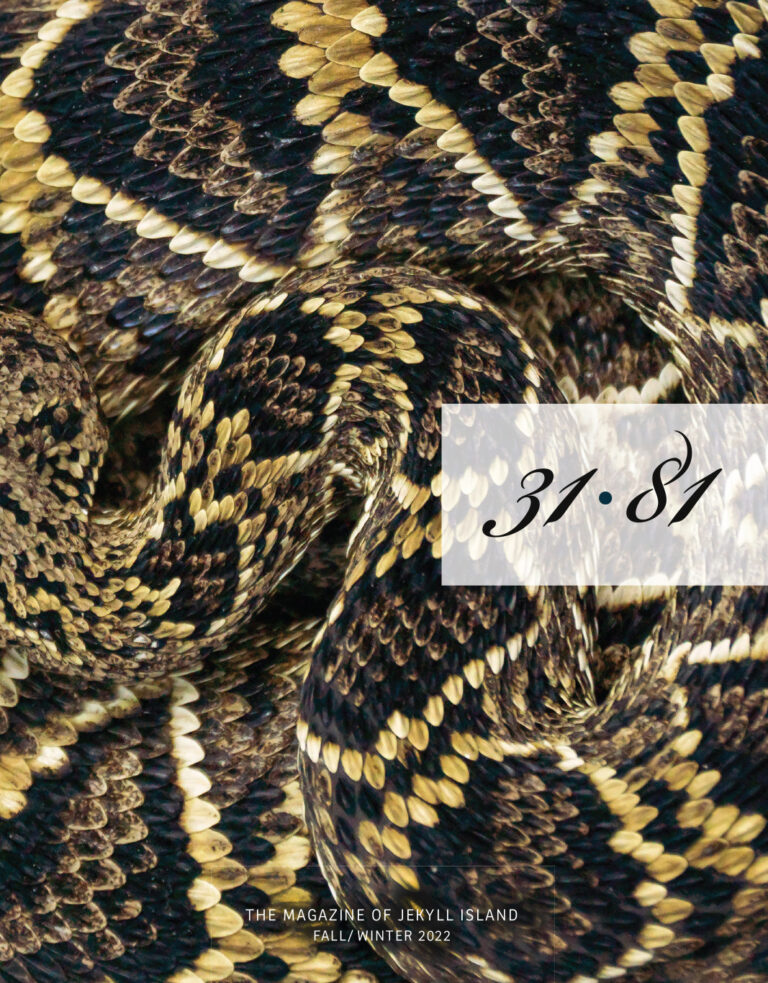Fighting fiddler crabs stake their claim all over the island
BY TESS MALONE
Traipsing around Jekyll Island at low tide, visitors might discover a tiny crab with a comically large claw. The find could be one of three different fiddler crabs native to the island: the sand fiddler found on the beach, the Atlantic mud fiddler taking residence on the edges of the salt marsh, or the red-jointed or brackish-water fiddler that makes the tidal creeks its home. You’d be hard pressed to find a part of the island where there isn’t a fiddler crab.
How to spot which is which? “To the untrained eye, they are quite hard to tell apart,” says Jekyll Island Authority’s natural resources manager, Yank Moore. Instead, it’s easier to distinguish males and females, he notes. Females are duller in color and have two regularly sized claws. Males are often flashier, with one giant claw that can measure up to half their body weight. Considering these crabs are only two inches in length, the appendage stands out. And it’s not just for looks.

Fiddlers earn their name by the waving of their claw, which resembles playing a violin (or a fiddle). They move their claws both to attract mates and to protect their territory. They often lose their claws in fights against fellow fiddlers, or sometimes predators like raccoons, fish, and clapper rail birds steal it. Yet once lost, the claw isn’t gone forever. The smaller claw will take charge and grow larger while a new claw will form where the old one was lost.
Despite their sometimes combative lifestyles, fiddlers are plentiful on the island. Their harvest isn’t regulated. Their abundance helps to provide a healthy wetland because they feed off algae, bacteria, and plant detritus and end up aerating the mud in the process. When they aren’t battling on the beaches, fiddlers dig tunnels in the sand up to two feet deep and retreat when high tide hits.


